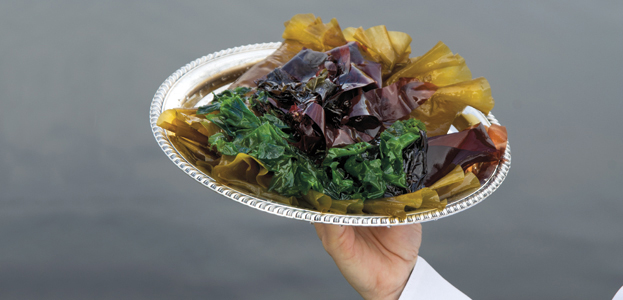
Marine Biologists Help Ocean Vegetables go Gourmet
What is a weed? A plant whose virtues have not yet been discovered. Ralph Waldo Emerson
A garden grows on the edge of the sea in Maine, in that rocky zone where the tides wash in and out. Winged kelp, nori, dulse and other succulent sea vegetables thrive in dense, undulating beds — an underwater Eden of tasty, nutritious foods.
To many Americans, these macroalgal plants are completely unfamiliar — except when, disguised as ordinary “seaweed,” they make for slippery footing at low tide or wash ashore following a storm. But that will change if University of Maine researcher Susan Brawley is successful in her campaign to cultivate appreciation for the flavors, textures and nutrients that sea vegetables add to new and familiar dishes — from piquant snacks and hearty main courses to rich desserts.
For centuries, people of most coastal cultures have enjoyed the benefits of a diet rich in sea vegetables, Brawley notes. Although interest in Asian cuisines has showcased sea vegetables in this country — nori-wrapped sushi and “seaweed salad” are some familiar Japanese menu items — many European, South American and Scandinavian cultures also include sea vegetables in their food traditions. (Here in coastal Maine, old-timers remember that paper sacks of crisp, home-dried dulse for snacking could be found on the counters of general stores.)
Brawley, a professor of plant biology in UMaine’s School of Marine Sciences, says the time is right to reintroduce Americans to their culinary roots and give Maine-based aquaculture a boost in the process.
